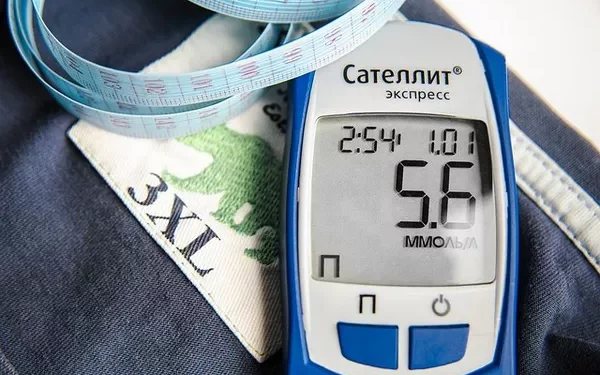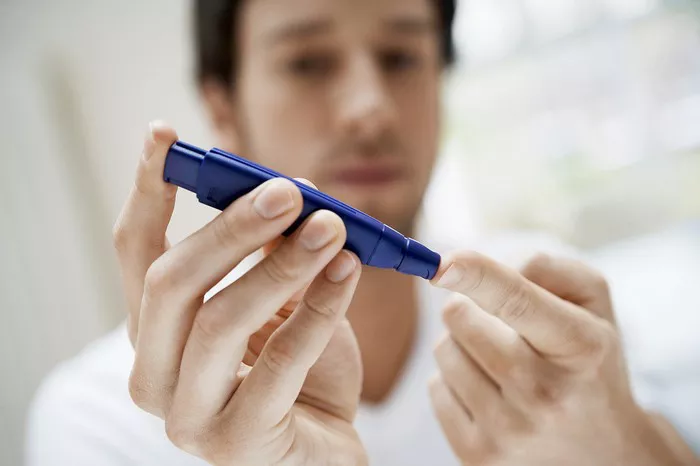Blood sugar regulation is one of the fundamental aspects of health management, particularly for individuals at risk for developing diabetes. One such risk group is those diagnosed with prediabetes, a condition characterized by higher-than-normal blood sugar levels that are not yet high enough to be classified as diabetes. Monitoring blood sugar is crucial for people with prediabetes to prevent the progression to type 2 diabetes. Understanding what constitutes “normal” blood sugar for prediabetes is the first step in managing the condition and reducing health risks.
For most people, blood sugar levels fluctuate throughout the day depending on food intake, physical activity, and overall metabolism. In individuals with prediabetes, blood sugar levels tend to remain higher than average, but not high enough to cause the more severe symptoms and complications of type 2 diabetes. Recognizing when blood sugar is in the prediabetes range is important, as early intervention can delay or even prevent the full onset of diabetes.
In this article, we will explore the normal blood sugar ranges for prediabetes, factors influencing blood sugar levels, the importance of regular monitoring, and how lifestyle changes can help manage blood sugar levels effectively.
Defining Normal Blood Sugar and Prediabetes
The American Diabetes Association (ADA) defines normal blood sugar levels based on three main types of tests: fasting blood sugar (FBS), oral glucose tolerance test (OGTT), and hemoglobin A1c (HbA1c). Each test measures different aspects of how the body processes sugar. For prediabetes, blood sugar levels are higher than normal but not high enough to meet the diagnostic criteria for diabetes. Here’s a breakdown of the various levels:
Fasting Blood Sugar (FBS)
Fasting blood sugar is measured after an overnight fast, typically 8–12 hours without eating. It is a commonly used test for diagnosing both diabetes and prediabetes. The blood sugar readings are as follows:
- Normal: 70–99 mg/dL
- Prediabetes (Impaired Fasting Glucose): 100–125 mg/dL
- Diabetes: 126 mg/dL or higher
Individuals with fasting blood sugar levels between 100 and 125 mg/dL fall into the category of prediabetes. It’s important to note that even if fasting blood sugar levels are slightly elevated, this can indicate the beginning stages of insulin resistance, a precursor to type 2 diabetes.
Oral Glucose Tolerance Test (OGTT)
The oral glucose tolerance test measures the body’s response to a glucose load, typically 75 grams of glucose dissolved in water. Blood sugar levels are tested at multiple intervals after ingestion, with the following ranges:
- Normal: Less than 140 mg/dL at 2 hours
- Prediabetes (Impaired Glucose Tolerance): 140–199 mg/dL at 2 hours
- Diabetes: 200 mg/dL or higher at 2 hours
The OGTT is a more dynamic test than the fasting blood sugar test and can provide a better understanding of how the body manages glucose over time. It is often used to diagnose prediabetes and type 2 diabetes when fasting blood sugar readings alone are inconclusive.
Hemoglobin A1c (HbA1c)
The A1c test reflects the average blood glucose level over the past two to three months. It measures the percentage of hemoglobin in the blood that has glucose attached to it. The following are the A1c thresholds:
- Normal: Below 5.7%
- Prediabetes: 5.7%–6.4%
- Diabetes: 6.5% or higher
An HbA1c value between 5.7% and 6.4% is indicative of prediabetes, meaning the person’s blood sugar levels have been consistently higher than normal over the past few months, but not to the degree that would be classified as diabetes.
Factors Influencing Blood Sugar Levels
Blood sugar levels are influenced by a variety of factors, including diet, physical activity, stress, illness, and medications. Understanding these factors and how they affect blood sugar is crucial for individuals managing prediabetes. Here are some of the key factors to keep in mind:
Diet
The foods we eat directly influence our blood sugar levels. Carbohydrates, in particular, have the most significant impact. Simple carbohydrates such as sugars and refined grains are quickly broken down into glucose, causing rapid spikes in blood sugar levels. Complex carbohydrates, such as whole grains, legumes, and vegetables, are digested more slowly, leading to more gradual increases in blood sugar.
In addition to carbohydrates, protein and fat also play a role in blood sugar regulation. Lean proteins, healthy fats, and fiber-rich foods help balance blood sugar levels and prevent rapid fluctuations.
Physical Activity
Regular physical activity helps the body use insulin more effectively and can improve blood sugar control. Exercise encourages the muscles to absorb glucose, reducing blood sugar levels. Aerobic exercises, such as walking, running, and swimming, as well as strength training, have all been shown to have beneficial effects on blood glucose regulation.
Stress
Stress triggers the release of hormones such as cortisol, which can raise blood sugar levels. Chronic stress can lead to sustained high levels of glucose in the bloodstream, making it harder to control blood sugar. Managing stress through relaxation techniques, mindfulness, and physical activity is essential for blood sugar regulation.
Sleep and Rest
Adequate sleep is critical for maintaining normal blood sugar levels. Poor sleep or sleep deprivation can disrupt the body’s ability to process glucose efficiently, leading to higher blood sugar levels. A good night’s rest helps regulate hormones that influence appetite, insulin sensitivity, and overall metabolic health.
Medications
Certain medications, such as corticosteroids and some blood pressure medications, can raise blood sugar levels. It is essential to work closely with a healthcare provider when taking medications that may affect blood glucose, as adjustments in diet, lifestyle, or medication may be necessary to maintain healthy blood sugar levels.
The Importance of Blood Sugar Monitoring in Prediabetes
Regular blood sugar monitoring is one of the most effective ways to manage prediabetes. By tracking blood glucose levels consistently, individuals can assess how well their body is handling sugar and make adjustments as needed. Blood sugar monitoring also helps individuals understand how specific foods, exercise, and other factors impact their glucose levels.
For people with prediabetes, using a home glucose meter is an essential part of self-management. This device allows individuals to test their blood sugar levels multiple times a day and keep a log of their results. By reviewing these logs, people can identify patterns and triggers that lead to elevated blood sugar levels and take corrective action.
Additionally, regular blood sugar monitoring can help prevent the progression from prediabetes to type 2 diabetes. Catching small fluctuations in blood sugar early allows individuals to make changes before their condition worsens.
How to Manage Blood Sugar Levels in Prediabetes
Managing blood sugar in prediabetes involves a combination of lifestyle changes, dietary modifications, and regular monitoring. Below are key strategies for controlling blood sugar levels effectively:
1. Focus on a Balanced Diet
A balanced diet rich in whole foods, fiber, and lean proteins is essential for managing blood sugar levels. Focus on consuming foods with a low glycemic index (GI), which cause slower, more gradual increases in blood sugar. Some examples of low-GI foods include:
- Whole grains (quinoa, brown rice, oats)
- Non-starchy vegetables (leafy greens, cauliflower, bell peppers)
- Legumes (lentils, beans)
- Fruits (apples, pears, berries)
2. Exercise Regularly
Engage in at least 150 minutes of moderate-intensity exercise per week, as recommended by the ADA. Exercise helps improve insulin sensitivity, which enables the body to use glucose more effectively.
3. Lose Weight if Necessary
Even modest weight loss can have a significant impact on blood sugar regulation. A 5–10% reduction in body weight can lower the risk of developing type 2 diabetes in individuals with prediabetes.
4. Monitor Blood Sugar Levels
Regular blood sugar testing is crucial to track how diet, exercise, and other factors impact blood glucose levels. This allows for timely adjustments to lifestyle and treatment plans.
5. Work with Healthcare Providers
Collaborate with a healthcare provider to develop a personalized plan for managing prediabetes. This may include medications, nutritional counseling, and lifestyle interventions.
Conclusion
Managing blood sugar levels in prediabetes requires a proactive approach to monitoring, diet, exercise, and lifestyle changes. Understanding the normal blood sugar ranges for prediabetes is essential for individuals to take control of their health. By making informed choices and working closely with healthcare providers, it’s possible to prevent the progression to type 2 diabetes and lead a healthy, active life.
Related topics:
What Sugar Level Is Considered Borderline Diabetes?


























